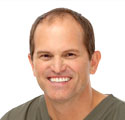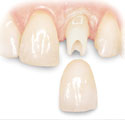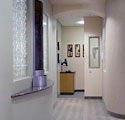OMS ProceduresPlatelet Rich PlasmaPlatelet Rich Plasma (PRP) is exactly what its name suggests. The substance is a by-product of blood (plasma) that is rich in platelets. Until now, its use has been confined to the hospital setting. This was due mainly to the cost of separating the platelets from the blood (thousands) and the large amount of blood needed (one unit) to produce a suitable quantity of platelets. New technology permits the doctor to harvest and produce a sufficient quantity of platelets from only 55 cc of blood drawn from the patient while they are having outpatient surgery. Why all the excitement about PRP? PRP permits the body to take advantage of the normal healing pathways at a greatly accelerated rate. During the healing process, the body rushes many cells and cell-types to the wound in order to initiate the healing process. One of those cell types is platelets. Platelets perform many functions, including formation of a blood clot and release of growth factors (GF) into the wound. These GF (platelet derived growth factors PGDF, transforming growth factor beta TGF, and insulin-like growth factor ILGF) function to assist the body in repairing itself by stimulating stem cells to regenerate new tissue. The more growth factors released sequestered into the wound, the more stem cells stimulated to produce new host tissue. Thus, one can easily see that PRP permits the body to heal faster and more efficiently. A subfamily of TGF is bone morphogenic protein (BMP). BMP has been shown to induce the formation of new bone in research studies in animals and humans. This is of great significance to the surgeon who places dental implants. By adding PRP, and thus BMP, to the implant site with bone substitute particles, the implant surgeon can now grow bone more predictably and faster than ever before. PRP has many clinical applications:
PRP also has many advantages:
Frequently asked questions about PRP:1. "Is PRP safe?" Yes. During the outpatient surgical procedure a small amount of your own blood is drawn out via the IV. This blood is then placed in the PRP centrifuge machine and spun down. In less than fifteen minutes, the PRP is formed and ready to use. 2. "Should PRP be used in all bone-grafting cases? " Not always. In some cases, there is no need for PRP. However, in the majority of cases, application of PRP to the graft will increase the final amount of bone present in addition to making the wound heal faster and more efficiently. 3. "Will my insurance cover the costs?" Unfortunately not. The cost of the PRP application (approximately $900) is paid by the patient. 4. "Can PRP be used alone to stimulate bone formation? " No. PRP must be mixed with either the patient�s own bone, a bone substitute material, such as demineralized freeze-dried bone, or a synthetic bone product, such as BIO-OSS. 5. "Are there any contraindications to PRP?" Very few. Obviously, patients with bleeding disorders or hematologic diseases do not qualify for this in-office procedure. Check with your surgeon and/or primary care physician to determine if PRP is right for you. |
PRP at our San Diego OMS Practice
|
Carmel Mountain Oral & Facial Surgery - 9912 A Carmel Mountain Road, San Diego, CA 92129 - 858.484.6418 - [email protected]
 Dr. Kuklok
Dr. Kuklok Dental Implants
Dental Implants Our
Our